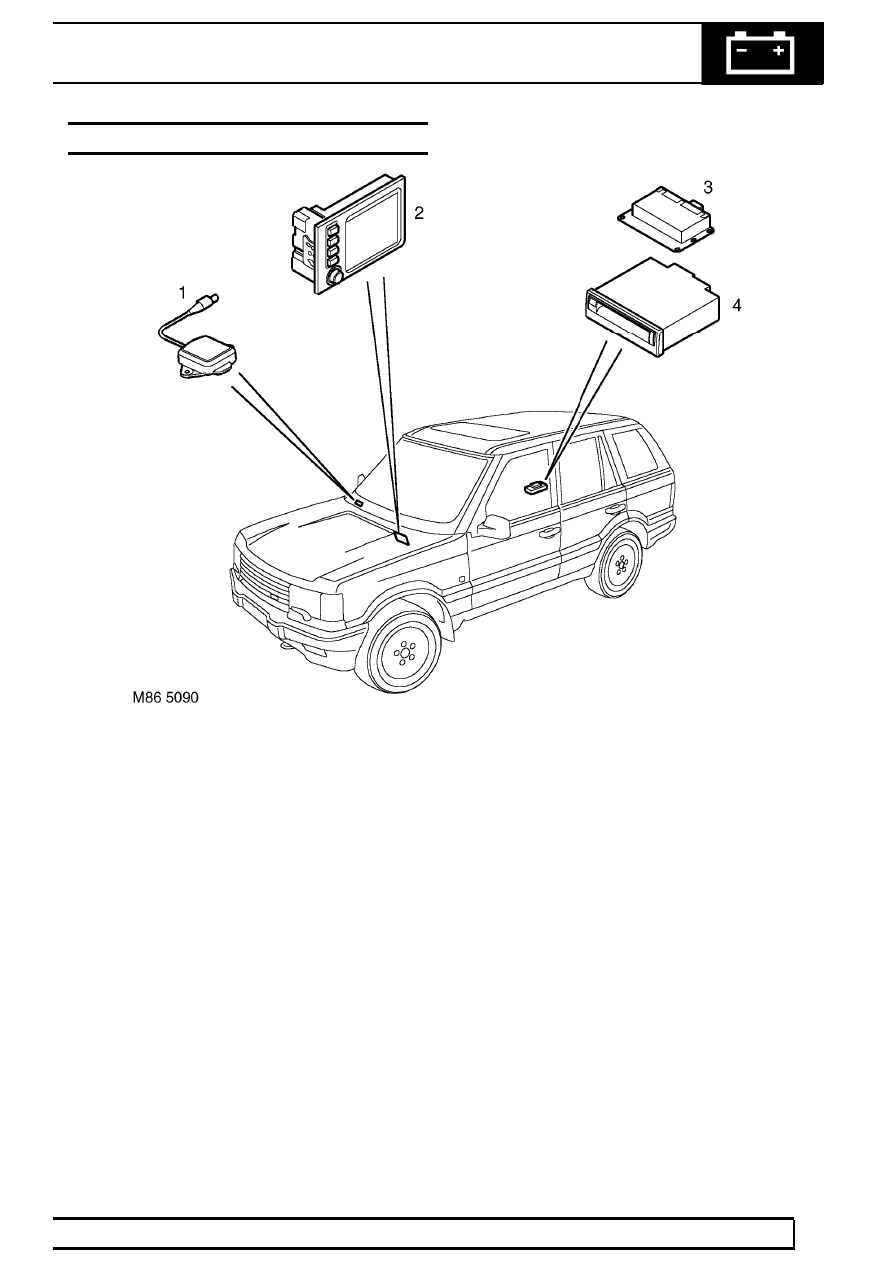Range Rover. Manual - part 330

NAVIGATION SYSTEM
1
DESCRIPTION AND OPERATION
NAVIGATION SYSTEM COMPONENT LAYOUT
1. GPS antenna
2. Navigation display unit
3. GPS receiver
4. Navigation computer
|
|
|

NAVIGATION SYSTEM 1 DESCRIPTION AND OPERATION NAVIGATION SYSTEM COMPONENT LAYOUT 1. GPS antenna |